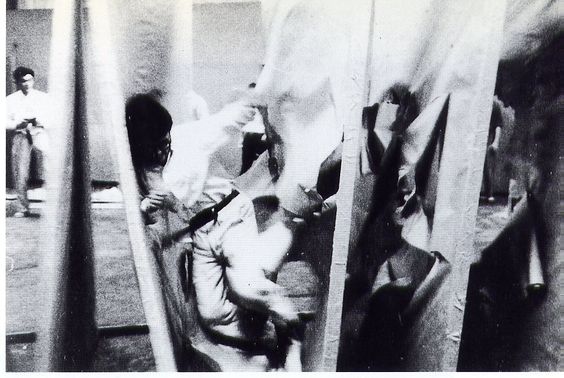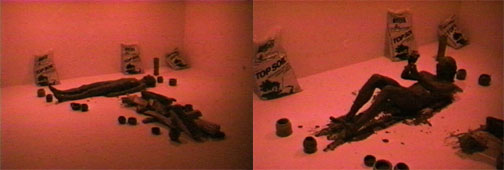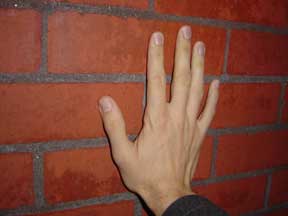
In 1956 Japanese painter and avant-garde artist YOSHIHARA JIRŌ wrote a manifesto that would drive the art making of a group of young, energetic, daring young artists in Japan following the end of the Second World War. In the opening to his manifesto Jirō wrote:
“To today’s consciousness, the art of the past, which on the whole presents an alluring appearance, seems fraudulent.”
The movement drew from other daring art movements of the 20th century – the Dadaists and the Futurists before them as well as their near contemporaries, the Abstract Expressionists. These movements doubted history and tradition as viable foundations upon which they could create meaningful work. Given the recent acknowledgements of the emperor of Japan, Hirohito, that he was not a living god, a tenet of faith pressed on the people before and throughout the war, it is not surprising that the youth would rebel against historical narratives and certain cultural traditions of their homeland.
“Let’s bid farewell to the hoaxes piled up on the altars and in the palaces, the drawing rooms and the antique shops.”
He set a daring new tone for modern art in Japan, echoing the sentiments of F. T. Marinetti in the Founding Manifesto of Futurism when he wrote, “Museums: cemeteries!… Identical, surely, in the sinister promiscuity of so many bodies unknown to one another. Museums: public dormitories where one lies forever beside hated or unknown beings. Museums: absurd abattoirs of painters and sculptors ferociously slaughtering each other with color-blows and line-blows, the length of the fought-over walls!”
Jirō continued:
“They are monsters made of the matter called paint, of cloth, metals, earth, and marble, which through a meaningless act of signification by humans, through the magic of material, were made to fraudulently assume appearances other than their own. These types of matter [busshitsu], all slaughtered under the pretense of production by the mind, can now say nothing.
“Lock up these corpses in the graveyard.”
The movement set out to create a dynamic relationship between the art object and the actions of the artist creating the work. Jirō’s manifesto continued:
“Gutai Art does not alter matter. Gutai Art imparts life to matter. Gutai Art does not distort matter.”
In 1955 Kazuo Shiraga created a defining work titled “Challenge to the Mud” in which he flung himself into a mud pile made of clay, wrestling and fighting with it as he attempted to shape the clay into something new.
Jirō’s manfiesto stated that “In Gutai Art, the human spirit and matter shake hands with each other while keeping their distance. Matter never compromises itself with the spirit; the spirit never dominates matter.”
Many people were influenced deeply by the Gutai movement. They were successful at gaining recognition internationally through their use of media, relationship building and public relations. The Fluxus artists of the 1960’s and 70’s in the United states were immediately and directly influenced by Gutai. While in college I read about the Gutai movement and drew influences from their work, most directly, Shiraga’s challenging mud.
Here are images from one of my performances, “rising from clay,” in which I coated my body in clay, laid out wood from the stack by our college’s wood fired kiln the length of my body, and continually attempted to rise from the floor, as though the clay were shaping me in a reversal of the traditional potter/clay relationship.

In another performance I would approach a wall touching and pressing on the wall reciting, “This is a wall. I accept the challenge of this wall.”

The intent was to address and heighten my and my audience’s awareness of simple things we put faith in such as stable engineering and the consistency of the world around us.
While many contemporary western artists look back to Fluxus, Dada and Futurism as well as movements like Surrealism and Suprematism as foundational concepts for modern art and performance, they may be missing a rich source of creative influence if they overlook Gutai.
To read the full manifesto of Gutai, follow this link to the full text at Guggenheim.org.


